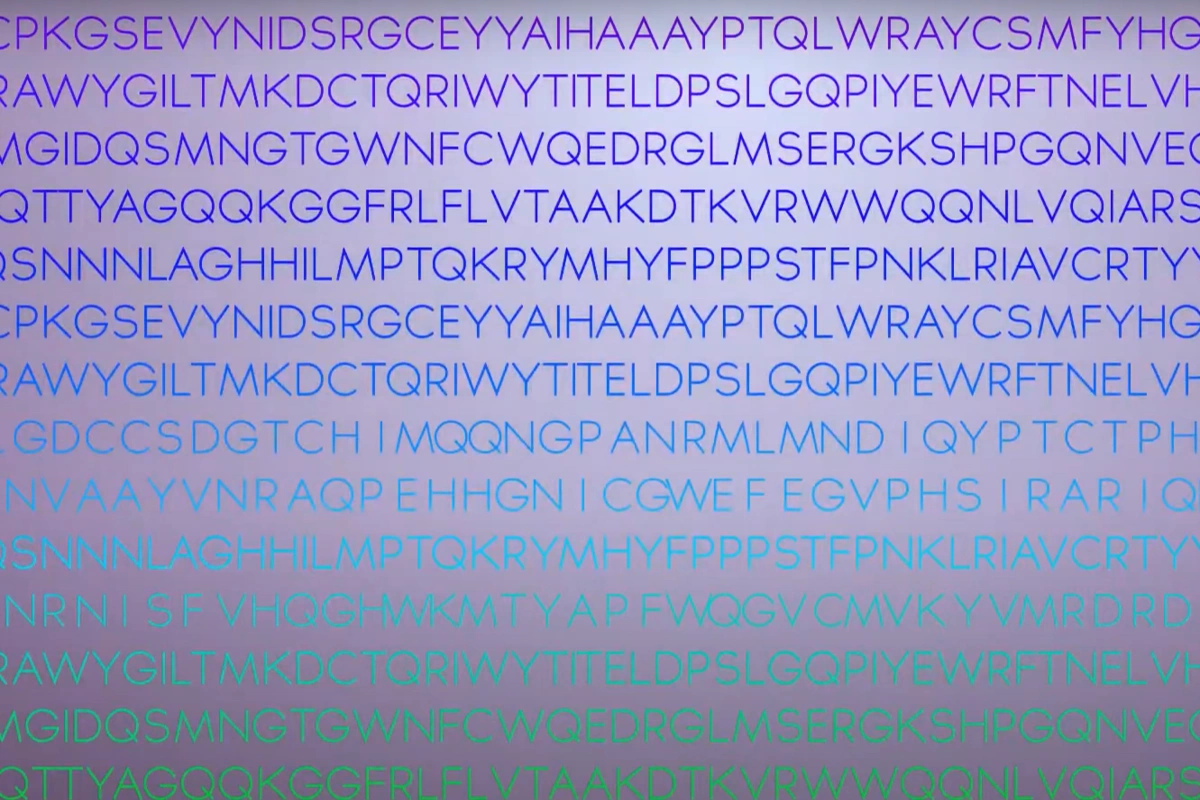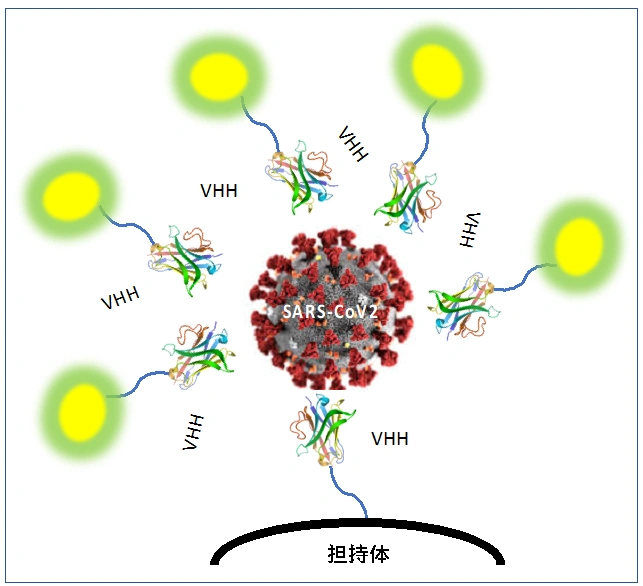This is Imura from COGNANO, standing in the view from an IT engineer (Part 3).
This time, I'll tell you how I met Matsumotori-san and Tsurube-san, IT engineers, and...
The view that a bio-man sees
Biotechnology is a culture of engrossed wet experiments, so I had no contact with engineers for a long time (even though I really needed it). I lived in an environment where I felt no need to do anything other than search for papers (PubMed) and email...
I also told you that the research in biotechnology has concentrated on gene-based molecular science. I also mentioned that bio-research has concentrated on gene-based molecular biology. The title of the textbook, like an industry Bible, is indeed "Molecular Biology of the Cell. In the illustration on the cover, the complex green color represents protein molecules and the white band represents the cell membrane. The fact that protein molecules in the cell membrane are of interest (and in the drug discovery business) as targets for drugs is already clearly stated on the cover.

Now let's look again at the approach COGNANO has obtained.
- A genome with ultra-fast changing and optimizing context → genetic data (let's just say that the only information window in the genome that can be explicitly semantized is the antibody gene)
- Computational resources → live alpacas (successfully flown in from Oregon!)
- Technology for ultra-fast decoding → Next generation sequencers (lots of contract companies are operating and the unit cost is getting cheaper and cheaper)
… Yikes! Isn't the strategy perfect? But what actually happened was stagnation. It is a bitter memory, but five years ago, when we first reached this step, we stopped thinking in front of the genetic data spit out by the next-generation sequencers. Of course, the data we got from the alpaca was a matrix of hundreds of millions of letters of the alphabet, atgc…. We are certain that the antibodies encoded by the gene exist in the alpaca's body and have the affinity to bind to the target protein (antigen). However, we do not know how strongly and to what parts of the body they bind, nor do we know what function they have. What kind of process and judgment does the living calculator called alpaca use to list the necessary antibodies?… In the first place, humans want antibodies because "useful substance = drug". The only solution is to "be able to infer usefulness from the gene sequence." Until this time, antibody genetic information on such a large scale did not exist, so naturally there was no methodology for information processing. The mood at this time was probably like that of Allied troops waiting for a German armored division. If we do not decipher the Enigma (German military code), we may be wiped out… Another path is to conduct biological experiments and examine the function of each antibody clone one by one, as in the past. If we tried hard enough, we might be able to check 100 or 500 clones a week. But that was not enough. If we went back to manual work, we would lose the point of starting this research.
I heard we need a program, but...
It's pathetic, but we should have known this would happen, but we thought "we can do it" until we saw the data. I sometimes do that, but since I am an expert in handling genes, proteins, and antibodies, I have become a "can-do" person. It took me a while to realize that my computer did not have a function key to select useful genes. I must have been in a daze.
I don't know how long I was unconscious, but one day, someone asked me, "May I touch the data? I was a doctor, but I was not sure how long I had been in a daze. He was a doctor, but I had heard that he enjoyed programming in his private life, so I asked him, "Oh, are you interested in it? Okay, try it," I casually handed him the data. Since it was a treasure trove of information anyway, I welcomed him to try it out. I can evaluate the industries I know, but I don't know who has what capabilities when it comes to different areas. I don't know who to contact. It is clear that the top programmers are not around (or rather, I have never met them), and even if I could contact them, basically the bioman does not know how to program and the engineer does not know the language of biotechnology. We can't begin to explain "the relationship between antibodies and antigens," or even before that, "what is a gene," in other words, from scratch. I have never heard of anyone who went into biological research because they liked programming so much.
Mr. Y opened the door to a breakthrough. He categorized tens of millions of antibody clones and categorized them without wet experiments by analyzing how they can be bundled as relatives, how strong the binding strength is expected to be, and where on the antigen surface they are likely to bind 、、、、. I didn't know this was possible! I thought I said calmly, "Well, I imported alpacas to do this," but in fact I wanted to dance. The fact that we were able to write a program that could evaluate alpaca antibody gene data without experimentation was a sign of things to come. We were promised an era in which computers would be able to predict drugs, and we had a concrete roadmap to follow. Incidentally, I may not have been able to explain it well to the domestic ventures and companies that contacted me at the time to ask if I would work with them in an effort to gather a group of friends. It took me another many years to be convinced that they would not understand a concept they had never seen or heard of, even if I presented it in front of them. The reason is simple. The reason is simple: there are (almost) no one in the world who understands both biotechnology and IT. However, there is one overseas company that showed interest, and we are currently conducting joint research with that company.

Iandome
It was two years ago, but the moment the pandemic started, we were at the helm of a new type of corona. Since we had (coincidentally) been targeting the AIDS virus as one of our targets until the pandemic, we expected the RNA virus to mutate rapidly and any drugs to be neutralized sooner or later. We want to catch up with genomic mutations as quickly as possible, catch up with them, and if possible, get ahead of them and predict antibody effects… humanity has not yet built that path. Genomic mutations (viruses) are countered by genomic mutations (antibody genes). By analogy, it is similar to the technique of shooting down anomalous rockets fired from Gaza "before they land". Rather than missile firepower, the key is radar networks and real-time multiple response, or intelligence capabilities. I hear that Israel was able to develop the Iron Dome largely because of the power of IT tech. This is a great opportunity to test our skills. We may be able to improve the mechanism of bio-drug discovery at this time.
Another new focus of my attention during the pandemic was a theme other than medicine: social operation. What we learned from the corona is that
- there is a risk that a single drop of the virus can wipe out human society
- there is a personal disease aspect and a social security aspect to intercepting it. For example, "vaccine refusal," which is happening all over the world, is not a matter to be fooled around with, but also a matter of human rights and ideology.
- viruses change their forms from moment to moment, and vaccines and drugs become ineffective even as they are developed
- Pandemics, in general, should be understood as a phenomenon similar to natural or environmental disasters, and "social operations" other than therapeutics and medicine become even more important.
In order to keep society safe, it is essential to eliminate unnecessary traffic lines and effectively operate quarantine and medical care. Operation begins with understanding "when, where, who, and what conditions" and making highly accurate predictions. To do this, we must obtain the most detailed information possible on the type, location, quantity, and timeline of mutant viruses. I must have been thinking about this because I had in my mind a map that shows any point on earth in real time, which I used as a reference when I was stuck in the bio-pharma field. But alas, Google map still does not list the location and quantity of coronaviruses today. It only shows the number of infected people by PCR results. (I thought that it would be the duty of a bioman to develop such data … , and with the support and endorsement of a domestic company, I started to make a corona test kit. Since we are going to develop a lot of antibodies to be used as drugs anyway, it would be a waste if we did not use them for testing. I believed that if we could quantify the virus in real time, surely IT tech people would find it and do amazing things with the "cloud" system. …

The entry is long overdue. It was nine months after the pandemic began that I met Matsumotori, an IT engineer, as I was asking around about how cloud computing works and what IoT is. At that time, the drug discovery seeds had already been created. I would like to announce that even now, a year and a half later, it is still working as a drug (at the laboratory level) against Omicron strain. Such antibodies are extremely rare, so… conventional craftsmanship has been surpassed by algorithms! This is a result that gives us confidence. In the past two years, time has passed at a dizzying pace with the participation of Tsurubee, a machine learning expert, following Matsumotori, joint research with overseas IT techs, successful development of drug seeds, submission of papers, etc., and I find myself writing this blog like this. This progress is still very raw, so I will write about it soon after I settle down.
We now have a hybrid team!
Currently, COGNANO consists of a bio team and an AI team. Our vision is to become a leading company in automated drug discovery by leveraging our strength in data quality x quantity. We are also fortunate to have Matsumotory's partner, Tsurubee, who has dramatically improved COGNANO's machine learning capabilities. There are only a few teams in the world that can continuously chase after omicron mutations with the new COGNANO. There may be other companies in the world with similar ideas to ours. I look forward to the future of… whether we compete or cooperate.


I thought it would be a good idea to get him involved in this blog, and will next ask Maeda-san, a bioman, to continue writing. I am hoping that Matsumotori-san will continue to write from an IT perspective. If you write from a perspective other than mine, I think you will understand COGNANO even better, and you will realize that biotechnology is moving into the age of data (as has been predicted for some time). This is the end of a long but informative article on the view from an IT engineer's point of view part 3.
